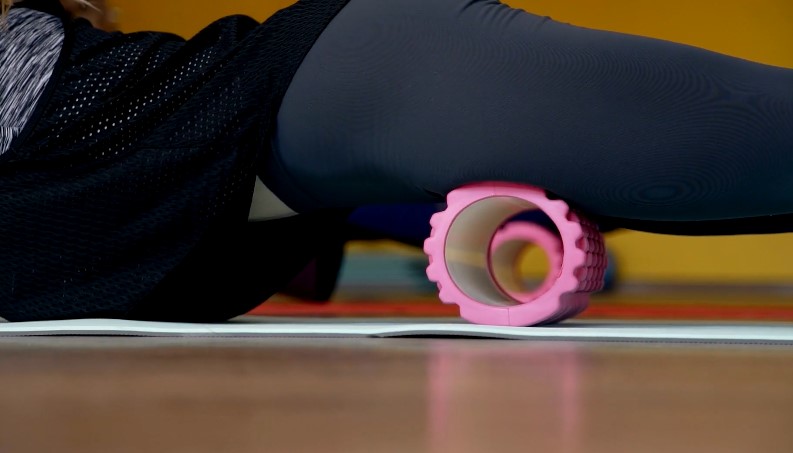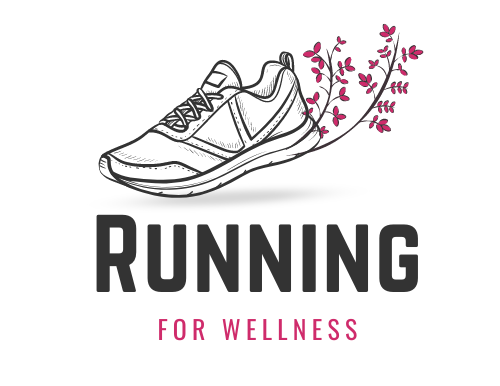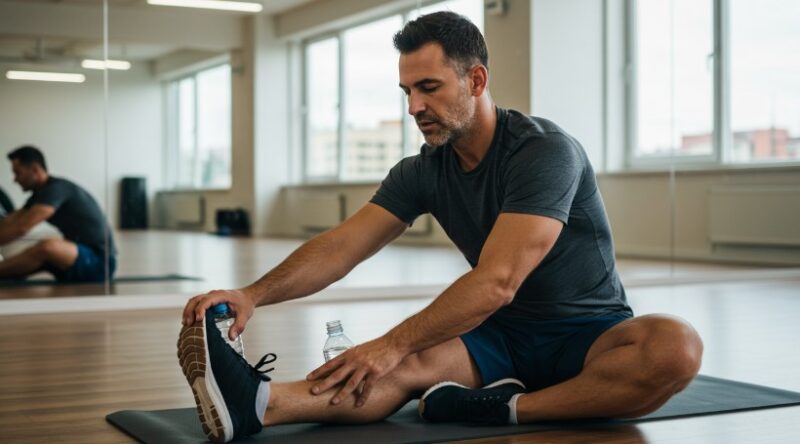Recovery after running is a necessity, not just something people opt for. As age increases, so does the need for smarter, more intentional post-run routines.
Bodies change, adapt more slowly, and respond differently to stress, which makes recovery planning essential for performance and health.
Aging impacts not only physical repair but also mental resilience. Muscles take longer to heal, joints become less forgiving, and motivation often competes with fatigue.
Integrating structured recovery strategies ensures not only better performance but also fewer injuries and longer participation in the sport.
SMART Recovery Principles Adapted for Runners

Originally developed as a cognitive-behavioral framework for those overcoming addiction, SMART Recovery focuses on empowering individuals through practical mental tools.
Its 4-Point Program includes motivation, managing urges, thought and emotion regulation, and maintaining life balance.
Translating the 4 Points to Running Recovery
Borrowing principles from the SMART framework offers a mental training toolkit that complements physical recovery. Runners over 40 often face a complex blend of physical fatigue and psychological resistance.
Using a structured approach to address motivation, urges, thought patterns, and lifestyle balance can dramatically improve consistency, injury prevention, and overall satisfaction with training.
Live a Balanced Life
A single-minded focus on running can wear down even the most seasoned athlete. Balance restores joy and sustains long-term engagement in the sport.
- Dedicate time weekly to non-running activities: music, art, gardening, reading
- Maintain regular contact with friends and family unrelated to your athletic identity
- Use guided self-reflection to assess emotional and social needs
- Set limits on run-related social media or obsessive metric tracking
Life outside the training schedule nourishes recovery. Fulfillment doesn’t hinge on mileage, pace, or competition.
In some cases, inadequate recovery becomes a factor in needing treatment for sports injuries, which could otherwise have been avoided with better planning.
Build and Maintain Motivation

Consistency in running begins with the right mindset. After age 40, progress may feel slower, and physical cues can become discouraging. Motivation must shift from pure performance to longevity and self-care.
- Set weekly and monthly post-run goals that are specific and measurable
- Use running apps or physical journals to track mileage, rest days, and milestones
- Create vision boards or mental imagery routines that reinforce commitment to long-term health
- Reward progress with non-food incentives like new gear or a massage
Visualization and rehearsal techniques help embed purpose into daily routines. Imagining the feel of a strong finish or a pain-free stride reinforces positive behaviors and keeps training on track.
Cope with Urges
Pushing through fatigue might have worked at 25, but it now carries higher risks. The impulse to train harder than necessary can come from habit, competitiveness, or frustration.
- Replace high-intensity urges with structured actions like yoga or walking
- Schedule sessions with the same importance as training runs
- Recognize early warning signs, fatigue, joint tightness, irritability, and treat them as cues for rest
- Use body scans or mindfulness check-ins to pause and evaluate sensations objectively
Reframing rest as progress helps reduce guilt and builds smarter training patterns. Every skipped recovery session now holds consequences, not benefits.
Manage Thoughts, Feelings, and Behaviors
Mental spirals often begin with guilt or unrealistic expectations. Skipping a run due to pain may feel like failure, yet pushing through often leads to setbacks.
- Apply ABC worksheets to analyze negative thoughts
- Activating Event: Skipped morning run due to knee pain
- Belief: “I’m lazy and falling behind”
- Consequence: Anxiety, rushing back too early
- Identify cognitive distortions like all-or-nothing thinking or catastrophizing
- Practice self-dialogue that separates identity from temporary setbacks
Thoughts shape behaviors, and habits build outcomes. By controlling the mental environment, runners remain resilient and adaptable.
Physiological Strategies for Effective Recovery

Runners over 40 must adapt training habits to support how their bodies now function. Each run introduces stress to muscles, tendons, and joints. What follows afterward determines:
- Resilience
- Strength gains
- Injury prevention
Smart recovery capitalizes on biological processes that become less efficient with age.
To help implement these strategies effectively, key physiological elements should be understood and applied consistently.
Aging Muscles and the Role of Recovery
Aging reduces muscle elasticity, slows cellular repair, and heightens the risk of overuse injuries.
Pushing through fatigue without adjusting for age-related changes only amplifies damage. Planned rest is not optional, it’s essential.
Key adjustments to consider include:
- Scheduling at least one full rest day per week.
- Using lower-intensity sessions (such as brisk walking or swimming) instead of pushing hard every day.
- Monitoring for early signs of inflammation, tightness, or stiffness that might signal a need for additional rest.
Muscle Repair and Growth

Training creates micro-tears in muscle tissue. Recovery allows those tissues to rebuild stronger, a process known as supercompensation.
Skipping recovery short-circuits gains and often leads to plateaus or regression.
Support this phase with:
- Adequate protein intake immediately after a run.
- Gentle stretching and light movement to promote circulation.
- Massage or foam rolling to reduce stiffness and trigger muscle repair signals.
Protein synthesis peaks in the hours following a run. Ignoring that window reduces the chance of maximizing strength adaptations.
Training smarter means allowing muscles to rebuild, because without proper repair, adaptation cannot occur.
Energy Replenishment
Longer runs deplete glycogen stores. Without timely replenishment, recovery slows and fatigue sets in.
Muscle soreness lasts longer, performance declines, and injury risk increases.
Optimal energy replenishment involves:
- Consuming carbohydrates within 30–60 minutes post-run.
- Aiming for a 3:1 or 4:1 carbohydrate-to-protein ratio.
- Including easily digestible foods like smoothies, yogurt with granola, or peanut butter on toast.
Adding a quality protein source improves nutrient absorption and supports muscle regeneration.
Skipping or delaying post-run meals disrupts recovery and reduces readiness for the next workout.
Nutritional Strategies for Recovery

Proper nutrition serves as a foundation for effective recovery in runners over 40.
As metabolic efficiency changes with age, recovery demands sharper focus on timing, composition, and consistency of nutrient intake. Fueling isn’t only about calories, it’s about choosing foods that heal, protect, and rebuild.
Post-Run Fueling
Refueling shortly after a run maximizes glycogen restoration and initiates muscle repair.
A 4:1 carbohydrate-to-protein ratio has been shown to support both recovery and future performance in older athletes.
Timing matters; consuming nutrients within 30 to 60 minutes post-exercise enhances effectiveness.
Examples of balanced post-run snacks include:
- Smoothie with banana, almond milk, and whey protein
- Whole grain toast with peanut butter and a side of Greek yogurt
- Oatmeal topped with berries and a hard-boiled egg
- Chocolate milk paired with a protein bar
Nutrient-dense combinations replenish energy stores while initiating muscle rebuilding.
Micronutrients Matter

As bodies age, they may absorb and utilize vitamins and minerals less efficiently.
Deficiencies increase the risk of injury, delay recovery, and reduce overall endurance.
Essential micronutrients for older runners include:
- Calcium: Strengthens bones and reduces fracture risk
- Magnesium: Aids in muscle relaxation and prevents cramping
- Vitamin D: Supports immune function and bone metabolism
- Zinc: Facilitates tissue repair and immune response
Anti-inflammatory Foods
Inflammation after exercise can delay recovery if left unchecked. Certain foods help mitigate inflammation, protect joints, and speed healing.
A consistent anti-inflammatory eating pattern supports overall recovery quality.
Powerful anti-inflammatory foods include:
- Salmon and other fatty fish: High in omega-3 fatty acids
- Blueberries and cherries: Packed with antioxidants
- Leafy greens: Nutrient-rich and inflammation-calming
- Turmeric: Contains curcumin, a potent anti-inflammatory compound
- Walnuts and flaxseeds: Excellent plant-based omega-3 sources
Including these regularly reduces post-run soreness and supports immune health.
The Bottom Line
Recovery methods rooted in cognitive principles and physical science offer runners over 40 the best path to longevity and enjoyment.
Embracing SMART Recovery concepts alongside nutritional and physiological tactics transforms downtime into growth.
Longevity isn’t about grinding harder. It’s about recovering smarter. Structured recovery, paired with mental wellness and emotional awareness when needed, ensures every step taken leads to a stronger, healthier athlete.
Related Posts:
- How Can You Start a Career as a Running Coach?
- How Long Does It Take to Train for a Half Marathon?
- How To Recover From Muscle Inflammation Without Medication
- Top 400 Hilarious Gym Quotes to Keep You Motivated
- How Far Is a Half Marathon? Everything You Need to Know
- Lower Back Pain While Running? Here's What You Need to Know







